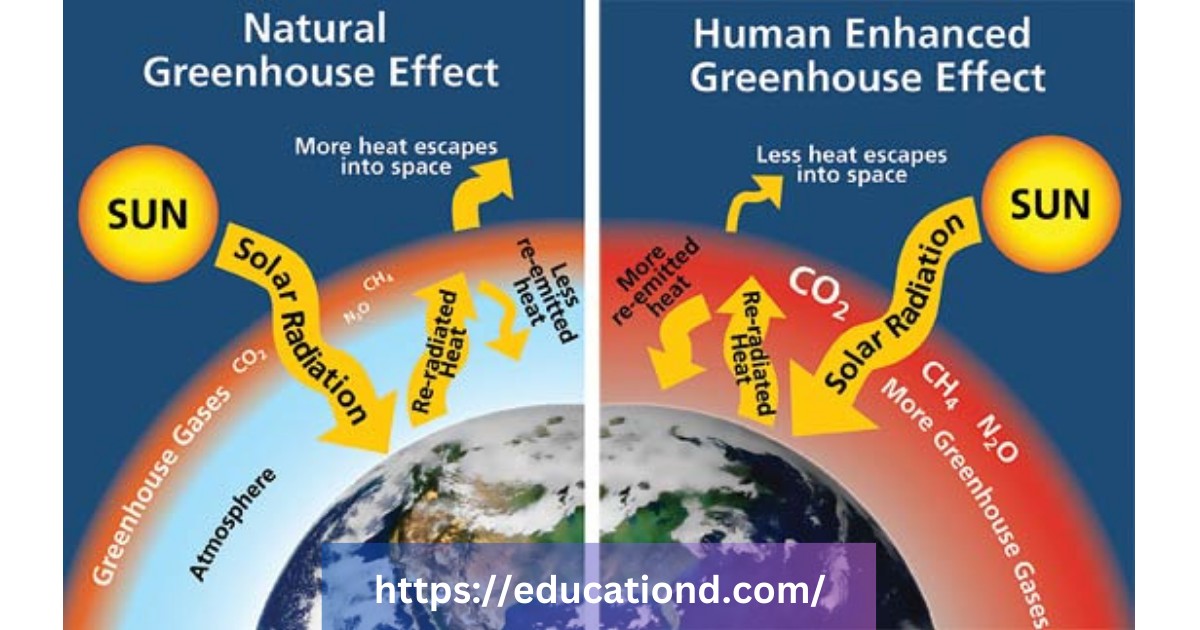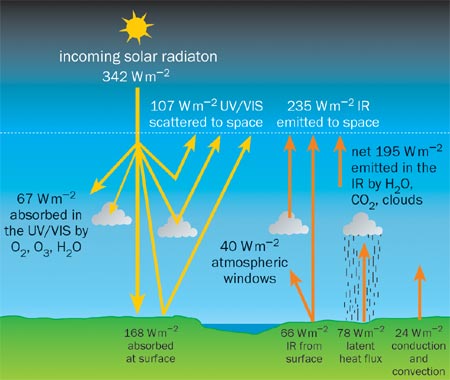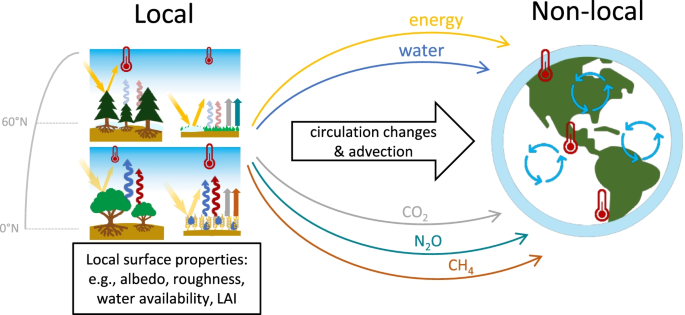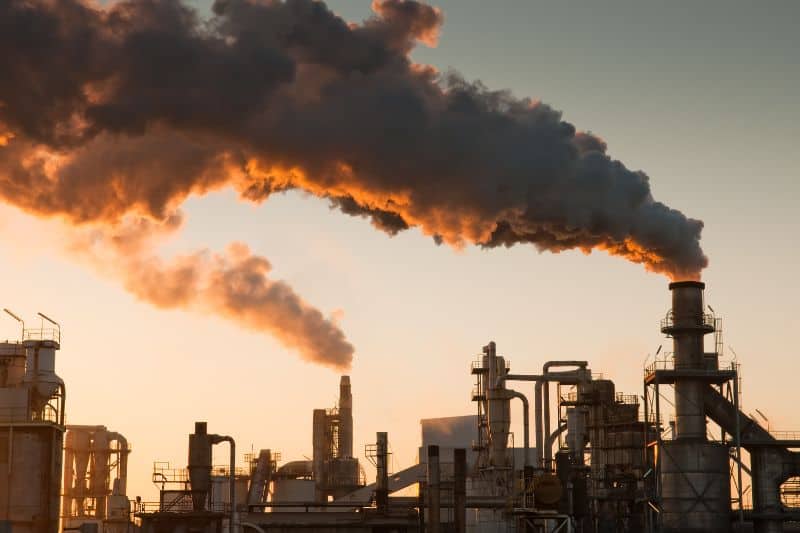Introduction
Climate change is a topic that has garnered significant attention in recent years, and for good reason. The Earth’s climate is undergoing profound and rapid changes, leading to increasingly severe weather events, rising sea levels, and disruptions to ecosystems. But what exactly is causing these changes? While various factors contribute to climate change, one of the most significant and widely studied culprits is the presence of greenhouse gases in our atmosphere. In this blog post, we will explore the role of greenhouse gases in driving climate change, examining their sources, effects, and potential solutions.
Understanding Greenhouse Gases
Greenhouse gases are compounds in the Earth’s atmosphere that have the ability to trap heat from the sun, preventing it from escaping back into space. This natural phenomenon, known as the greenhouse effect, is essential for maintaining a habitable temperature on our planet. Without some level of greenhouse gases, Earth would be too cold to support life as we know it.
However, the problem arises when there is an excess of these gases in the atmosphere. Human activities, such as the burning of fossil fuels, deforestation, and industrial processes, have significantly increased the concentration of greenhouse gases, especially carbon dioxide (CO2), methane (CH4), and nitrous oxide (N2O). These gases are referred to as “anthropogenic” greenhouse gases because their presence in the atmosphere is largely due to human activities.
The Impact of Greenhouse Gases on Climate
The increase in greenhouse gas concentrations in the atmosphere has a direct and measurable impact on our climate. Here’s how it works:
Trapping Heat: Greenhouse gases, such as CO2 and CH4, absorb and re-emit heat energy, effectively trapping it in the Earth’s atmosphere. This trapped heat warms the planet’s surface, leading to a rise in global temperatures, a phenomenon commonly known as global warming.
Altering Weather Patterns: The warming of the Earth’s surface has far-reaching consequences for weather patterns. It can lead to more frequent and severe weather events, including hurricanes, droughts, and heatwaves. Changes in precipitation patterns can also disrupt ecosystems and agriculture.
Melting Ice and Rising Sea Levels: The warming of the planet causes glaciers and polar ice caps to melt, contributing to rising sea levels. This poses a significant threat to coastal communities and low-lying areas, leading to increased coastal erosion and flooding.
Ocean Acidification: The excess CO2 in the atmosphere doesn’t just affect the air; it also gets absorbed by the oceans. This leads to ocean acidification, which can harm marine life, particularly organisms with calcium carbonate shells or skeletons, like corals and certain types of plankton.
Feedback Loops: Perhaps the most concerning aspect of greenhouse gas-induced climate change is the potential for feedback loops. For example, as Arctic ice melts due to rising temperatures, it exposes darker ocean water underneath. Dark water absorbs more sunlight, leading to further warming and ice melt—a self-reinforcing cycle.
Sources of Greenhouse Gas Emissions
Understanding the sources of greenhouse gas emissions is critical for addressing climate change effectively. Here are some of the primary sources of these emissions:
Fossil Fuels: The burning of fossil fuels—coal, oil, and natural gas—for energy production is the largest contributor to CO2 emissions. This includes emissions from power plants, transportation, and industrial processes.
Deforestation: Forests play a crucial role in absorbing CO2 from the atmosphere. When trees are cut down or burned, the stored carbon is released back into the air as CO2, contributing to greenhouse gas emissions.
Agriculture: Agriculture is a source of both methane and nitrous oxide emissions. Livestock, such as cattle, produce methane during digestion, and synthetic fertilizers used in farming release nitrous oxide.
Industrial Processes: Certain industrial activities, such as cement production and the use of refrigerants, release greenhouse gases like CO2 and hydrofluorocarbons (HFCs).
Waste Management: Landfills and waste treatment facilities emit methane as organic waste decomposes anaerobically. Proper waste management and methane capture can mitigate these emissions.
The Role of Methane
While CO2 is often the focus of discussions about greenhouse gases, methane is a potent contributor to climate change. In fact, methane is approximately 25 times more effective at trapping heat in the atmosphere than CO2 over a 100-year period. The main sources of methane emissions include:
Livestock: Ruminant animals, such as cattle, produce methane during digestion through a process called enteric fermentation.
Natural Gas and Oil Production: Methane can be released during the extraction and transportation of natural gas and oil.
Landfills: As mentioned earlier, landfills are significant sources of methane emissions as organic waste decomposes.
Wetlands: Natural wetlands also release methane as a byproduct of anaerobic decomposition.
Efforts to reduce methane emissions are essential for mitigating climate change, and strategies include improved livestock management, more efficient natural gas infrastructure, and better waste management practices.
Addressing Greenhouse Gas Emissions
The urgent need to address greenhouse gas emissions and combat climate change cannot be overstated. Here are some key strategies and solutions:
Transition to Renewable Energy: Shifting away from fossil fuels and transitioning to renewable energy sources like solar, wind, and hydropower can significantly reduce CO2 emissions from energy production.
Energy Efficiency: Improving energy efficiency in buildings, transportation, and industrial processes can reduce energy consumption and, consequently, greenhouse gas emissions.
Reforestation and Afforestation: Protecting existing forests and planting new trees can help sequester carbon from the atmosphere.
Sustainable Agriculture: Implementing sustainable agricultural practices, such as reduced livestock methane emissions and soil carbon sequestration, can mitigate emissions from the agriculture sector.
Carbon Capture and Storage (CCS): CCS technologies capture CO2 emissions from industrial processes and power plants and store them underground, preventing them from entering the atmosphere.
Policy and Regulation: Governments can play a crucial role in addressing greenhouse gas emissions by implementing policies and regulations that encourage emission reductions, such as carbon pricing and emissions standards.
Individual Actions: Individuals can also make a difference by reducing their carbon footprint through actions like driving less, conserving energy, and supporting sustainable products and practices.
Conclusion
The role of greenhouse gases in driving climate change is clear and well-documented. While some level of these gases is essential for maintaining a habitable climate on Earth, the excessive emissions resulting from human activities have disrupted this delicate balance. To address the challenges of climate change, we must take immediate and concerted action to reduce greenhouse gas emissions, transition to cleaner energy sources, and implement sustainable practices across various sectors of society. The future of our planet and the well-being of future generations depend on it.
In this comprehensive blog post, we’ve explored the crucial role of greenhouse gases in driving climate change, understanding their sources, and the impacts they have on our planet. By taking proactive steps to reduce greenhouse gas emissions and adopt sustainable practices, we can work towards a more stable and sustainable future for our planet.





